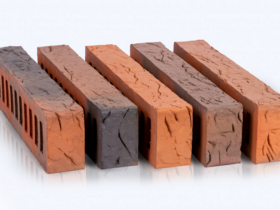Ceiling tiles are a finishing material that allows you to quickly and easily remove the irregularities and disadvantages of the usual ceiling. It performs, first of all, a decorative function.
Types of ceiling tiles
Pressed (or stamped). Produced from polystyrene blocks, has a thickness of 6-8 millimeters. Inexpensive and practical option;
Injection. Has a clear and deep pattern, thickness – 9-14 mm. It is carried out by sintering polystyrene foam;
Extruded. It is made from extruded polystyrene foam covered with a film or painted. Has a smooth, not granular surface.
Types of polystyrene tiles according to surface type
Laminated. Covered with a special protective film, which makes it resistant to moisture. Thanks to this property, tiles are washing. There may be various colors, as well as stylized wood, marble and other materials;
Unshamable. The surface can be painted with water -based paint.
Tile for ceiling by type of junction
Suture. The panels have a clearly expressed line, at the junction of the tiles a distinguishable seam is formed;
Seamless. Tiles have an uneven shape, they do not have a border, this allows you to make them with minimal gaps between the tiles when they are sticked and create the effect of the monolist of the ceiling coating.
A special look is a mirror ceiling tile. It is made mainly of plastic, and thin mirror spraying is applied on top of it.
How to glue ceiling tiles
Usually gluing starts from the center of the room. To be more accurate, then from the chandelier. In this case, 4 lines depart from her, forming a cross with straight angles. These features will become guides in the process of work.
The size of one slab is usually 50×50 cm. Based on this, the required number of tiles should be calculated. At the same time, professionals recommend taking 10-15% of tiles more, since there may be an error in the calculation, and when cutting, the plate can be spoiled.









